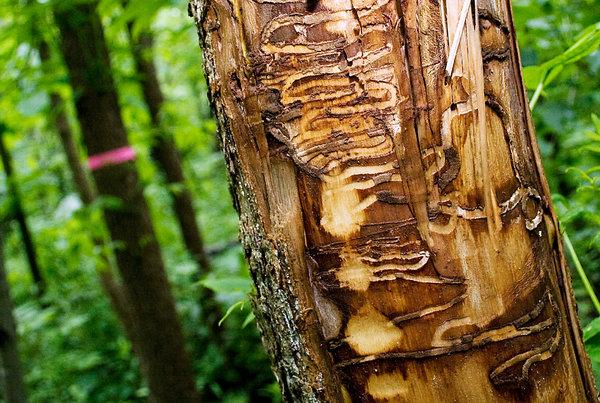If Your Trees Look Sick, Don’t Wait to Look For a “Tree Doctor” in Summit Corners!
Trees, like people and animals, get ill. How do you locate a “tree doctor” if your trees show evidence of poor health?
Leaf loss, in one area or across a tree’s entire crown, is the most typical sign of a problem. Mushroom growth, usually from a trunk or base, is another. A spate of dead limbs can be a symptom.
An ISA-Certified Arborist from Dorshak Tree Specialists is your best choice for prompt, responsive tree treatment service in Summit Corners! Trained to spot and diagnose diseases and insect pests, these tree specialists prescribe treatments for ailments that afflict Wisconsin trees.
Alterations in leaf color are another symptom. Yellow leaves can be reflective of a fertilizer deficiency, often with oaks. Yet, yellow is the normal color of leaves on a sunburst locust tree. A Certified Arborist knows the difference, and how to read the messages of leaf colors!
 Preventing problems is the most effective approach to tree health. It’s advisable to have your trees inspected every three to five years by a Certified Arborist. Dorshak Tree Service, with seven Certified Arborists on staff, offers this service for free for tree owners in and around Summit Corners.
Preventing problems is the most effective approach to tree health. It’s advisable to have your trees inspected every three to five years by a Certified Arborist. Dorshak Tree Service, with seven Certified Arborists on staff, offers this service for free for tree owners in and around Summit Corners.
What are they watching for? The aforementioned symptoms, of course. Another area of potential alarm is crevices or cavities in trees, where moisture and insects gather. The goal is to spot ongoing or possible problems proactively. Preventing a disease or insect infestation is far simpler than curing them once established.
Colorado blue spruces dot many yards. A close viewing, though, might find signs of Rhizosphaera needle cast, a fungus that attacks this non-native species. Brown needles, or collected needles beneath a tree, are a symptom. Treatment can thwart the fungus from decimating and ultimately killing these beautiful trees.
Another option – again, long before reaching this point – is planting trees with similar aesthetics, yet far more resistance to insects and disease. Concolor firs and Norway spruces are substitutes for Colorado spruces.
Other tree species in Summit Corners are susceptible to fungi diseases, too. Oaks suffer oak wilt. Elms contract Dutch elm disease. Proactive inspection can identify these realities in time to save the trees.
Application of fungicides can block root rot, a condition that afflicts trees growing in wet soil. Root rot isn’t choosy, either – its decay affects trees from a multitude of species.
Insect pests pose serious dangers to residential trees. Insects are usually host specific, meaning they target one species. The lethal bronze birch borer attacks birches. Linden borers mainly target lindens.
The emerald ash borer has been an unwelcome introduction for Summit Corners homeowners. The Asian invasive has decimated ash trees across Summit Corners and Wisconsin in recent years.
Another invasive, the spotted lanternfly, is moving west after its discovery in Pennsylvania in 2014. The China native feeds on more than 70 tree species, including maples, oaks, lindens, hickory and black walnut.
Preventing insect harm, once again, is often a matter of proactivity. Repellents are applied in two ways: injecting directly into trees, or drenching soil beneath for roots to absorb.
Just as you wouldn’t miss visiting a doctor for years on end, don’t risk the health of your trees. Contact Dorshak Tree Specialists for a complimentary checkup. Yes, their “tree doctors” still make house calls to Summit Corners.
.jpg)



